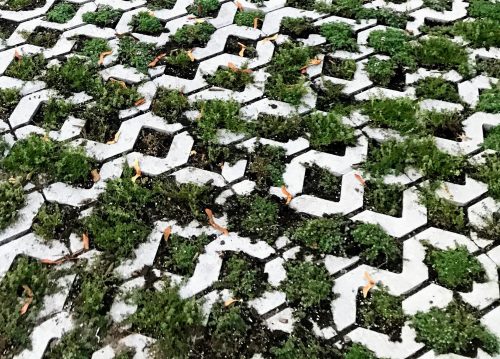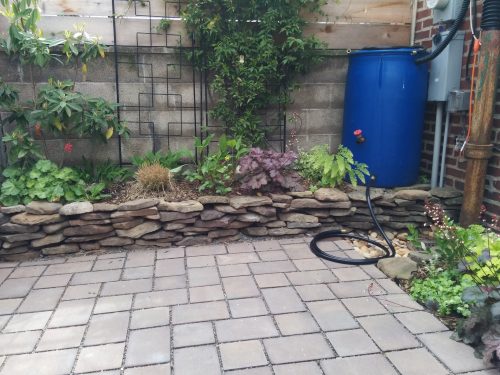
When not absorbed into the ground, stormwater runs off hard impermeable surfaces, down storm drains and through the City’s network of sewer pipes that carry it to local waterways. Stormwater picks up oils, greases, fertilizers, bacteria and other pollutants as it runs off hard surfaces.
In urbanized areas like Toronto, there are a lot of hard surface areas that are impermeable (e.g., asphalt and concrete). Impermeable surfaces do not allow water to penetrate through and result in stormwater runoff.
When severe storms happen, more stormwater runs off hard surfaces and enters the City’s sewer system, which can overwhelm the sewer system. This can lead to basement and surface flooding, poor surface water quality, and watercourse erosion that puts City infrastructure at risk.
The City takes a multi-pronged approach to manage the negative impacts of stormwater. The City is investing $4.5 billion over the next 10 years for stormwater adaptation and mitigation:
Generally, the more impermeable surface area on a property, the more stormwater that runs off the property to the City’s sewer system.
Examples of impermeable surfaces on private property include asphalt parking areas and driveways, concrete landscaping (e.g. patios, decks, walkways), and building roofs with impermeable materials
Actions to manage stormwater on private property can help reduce stormwater runoff to the City’s sewer system, which complements the City’s stormwater management initiatives and climate resilience efforts.
The City has several programs that offer financial incentives such as subsidies or grants to offset costs for property owners to actions to reduce stormwater runoff and basement flooding risks on their property.
The Basement Flooding Protection Subsidy Program helps residential property owners (single-family, duplex, triplex or fourplex) reduce the risk of basement flooding on their properties by installing flood protection measures.
The program offers the following subsidies of up to $3,400 per property:
The Mandatory Downspout Disconnection Financial Assistance Program offers a reimbursement of up to $500 to eligible low-income seniors or low-income persons with a disability for the costs of labour and materials for performing downspout disconnection.
The City requires all property owners in Toronto to ensure their downspouts are disconnected from the City’s sewer system, except by approved exemption.
The Eco-Roof Incentive Program helps fund the expansion of green roofs and cool roofs on Toronto homes and buildings across the city. Green roofs help manage and reduce runoff from home and building roof tops.
Eligible buildings include existing buildings, new buildings with a gross floor area of less than 2,000 square metres and new construction projects by Toronto school boards and not-for-profit organizations.
The program offers a financial incentive of $100 per square metre of vegetated roof area installed, up to a maximum of $100,000 per green roof project.

The PollinateTO Grants Program offers grants up to $5,000 to groups of three or more people to support community-led projects that:
Pollinator projects contribute to resilient ecosystems, enhance urban biodiversity and help reduce runoff by allowing it to be absorbed into the ground.
The City offers programs to support tree planting projects on private property, which help to reduce stormwater runoff.
Backyard Tree Planting Program – In partnership with Local Enhancement and Appreciation of Forests (LEAF), this program offers backyard tree planting services at a subsidized cost to Toronto residents.
Community Canopy Program – In partnership with the Arbor Day Foundation, this program connects Toronto residents with free trees through an online mapping tool that provides information on where to plant a tree on a specific property.
The City reviewed opportunities for new or expanded stormwater management incentives (subsidies or grants) to reduce basement flooding risks and stormwater runoff on private property.
Expanding the Basement Flooding Protection Subsidy Program
Green Infrastructure
As part of the consultation, the City gathered public feedback on green infrastructure features that would be of interest to property owners for potential new incentives (subsidy or grant) from the City.
Rain gardens and bioretention units: sunken planting beds with highly permeable and nutrient-rich soils that collect, absorb and treat runoff from roof downspouts, driveways and parking areas.
Soakaway pits: underground storage systems that receive runoff on a property and allow it to absorbed into the ground. They are typically lined with geotextile fabric and are filled with granular stone or other materials that allow water to travel through the pit.
Pavement removal: replacement of concrete walkways, patios and other landscaping with soft surfaces like grass or native vegetation.
Permeable pavement: interlocking pavers and porous asphalt or concrete that allow stormwater to seep into or between the paving materials and be absorbed into the ground.
Both pavement removal and permeable pavement help reduce runoff and filter pollutants in stormwater runoff.

Rain barrels: collect and temporarily store runoff that flows off a home or building roof downspout. The rainwater collected in the rain barrel can be reused for watering plants and landscaping on the property.

Public consultation on City stormwater management incentive programs took place from October 23 to November 5, 2024. The consultation sought feedback on:
Consultation Materials